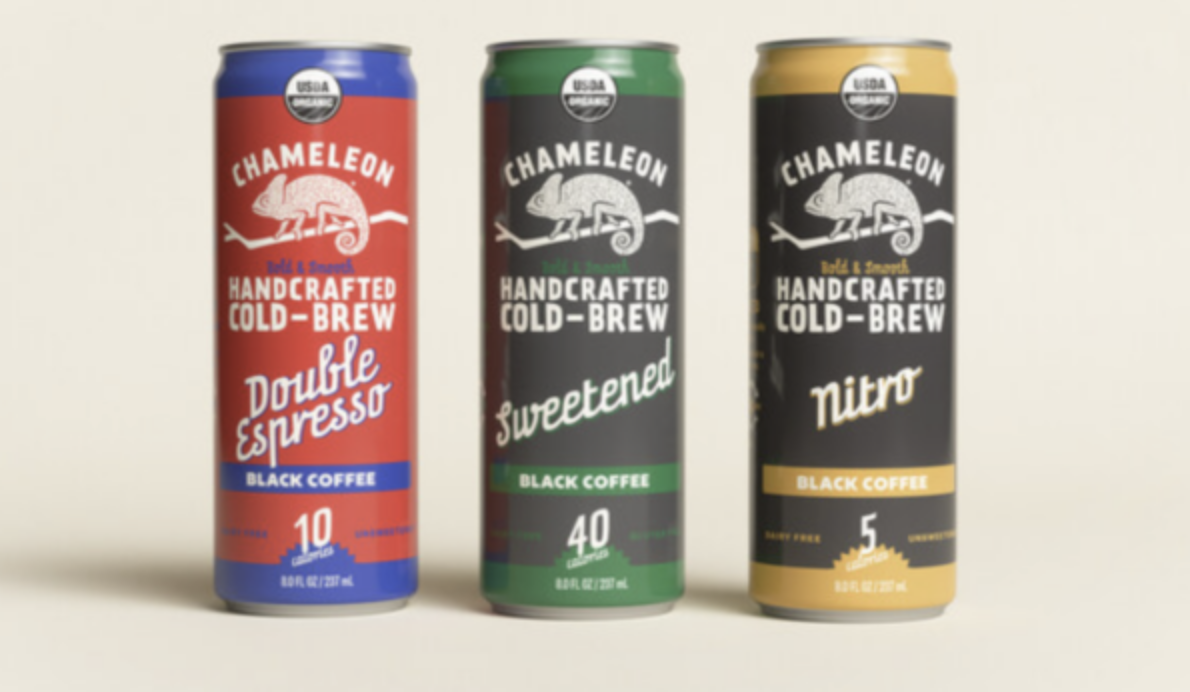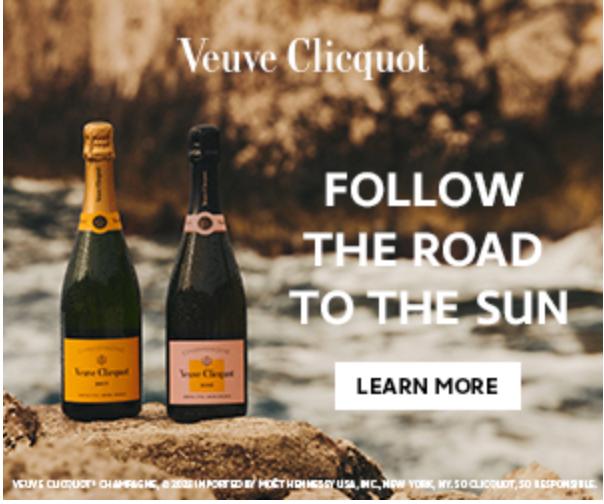NYers Need Caffeine: Nitro Black, Double Espresso, Flat White! Chameleon Organic Coffee Introduces Ready-to-Drink Cold-Brew Cans
Chameleon Organic Coffee®, the original purveyors of handcrafted bottled cold-brew coffee, today announced the expansion of its ready-to-drink category with the debut of four ultra-convenient 8 oz. cold-brew cans.
Handcrafted with 100% organic beans, Chameleon’s new ready-to-enjoy canned cold-brew line features four distinct flavors with sweetened and unsweetened options.
Each delivers unparalleled convenience by offering sustainably sourced coffee in a shelf-stable format, providing optionality for retailers and customers alike.
“We recognized the growing demand for variety and ease of convenience in the RTD coffee segment without compromising on quality and flavor,”
Andy Fathollahi
CEO of SYSTM Foods
“Our new canned cold-brew line provides our loyal customers with another delicious, no-prep option to enjoy their daily coffee ritual on-the-go, anytime.”
Each 8 oz. can contains approximately 130mg of naturally occurring caffeine, providing the perfect boost on the move or at home.
Flavors include:
Nitro Black: Chameleon’s first nitro cold-brew offers a smooth, creamy experience in every sip.
Double Espresso: Bold and smooth organic cold-brew made with dark roast espresso beans delivers a flavorful kick.
Sweetened Black: Black cold-brew lightly sweetened with just the right amount of organic cane sugar.
Flat White: Black cold-brew blended with whole milk creates a traditional flat white experience with a creamy, velvety finish.
The upcoming line complements Chameleon’s existing portfolio of award-winning products, including a variety of organic ready-to-drink 10 oz. cold-brews and 32 oz. multi-serve concentrate cold-brews; each handcrafted to match every mood.
Launching just in time for summer, Chameleon’s Nitro Black, Double Espresso and Sweetened Black 8 oz. canned cold-brews will be available for purchase online at ChameleonCoffee.com and Amazon, as well as at select retailers nationwide starting June 2024 with Flat White availability to follow.
For launch updates, please visit ChameleonCoffee.com.
About Chameleon Organic Coffee®
Founded in 2010, Chameleon Cold-Brew is Austin’s original purveyor of bottled cold-brew coffee. Providing a one-of-a-kind, completely customizable coffee experience, Chameleon uses certified organic, responsibly sourced coffee. Chameleon’s proprietary brewing process produces a super smooth, less acidic, highly caffeinated coffee that can be enjoyed hot or cold. The brand’s portfolio of organic coffee offerings includes ready-to-drink cold-brew varieties, cold-brew concentrates, and now whole bean and ground coffee.
For more information, please visit ChameleonCoffee.com.




YESS! Would try all of these immediately